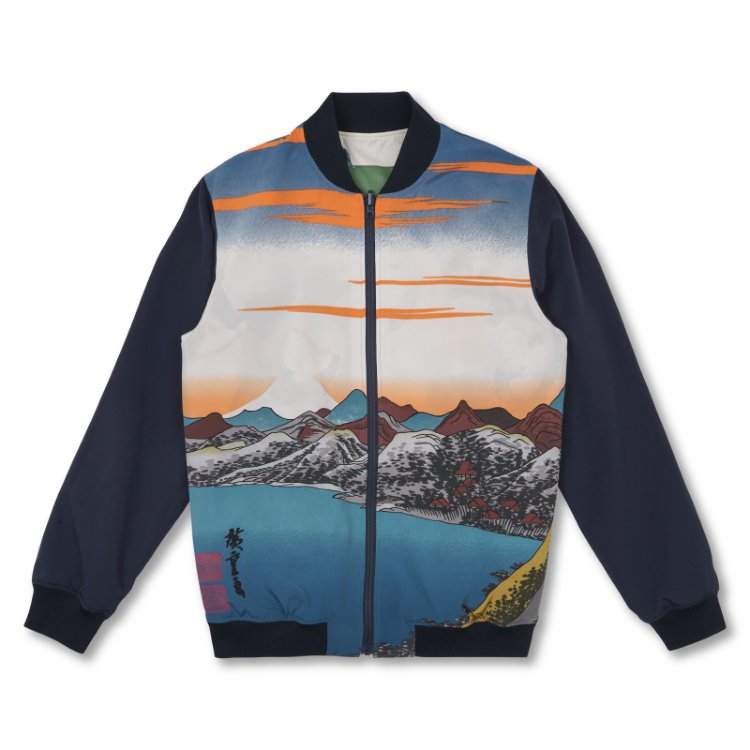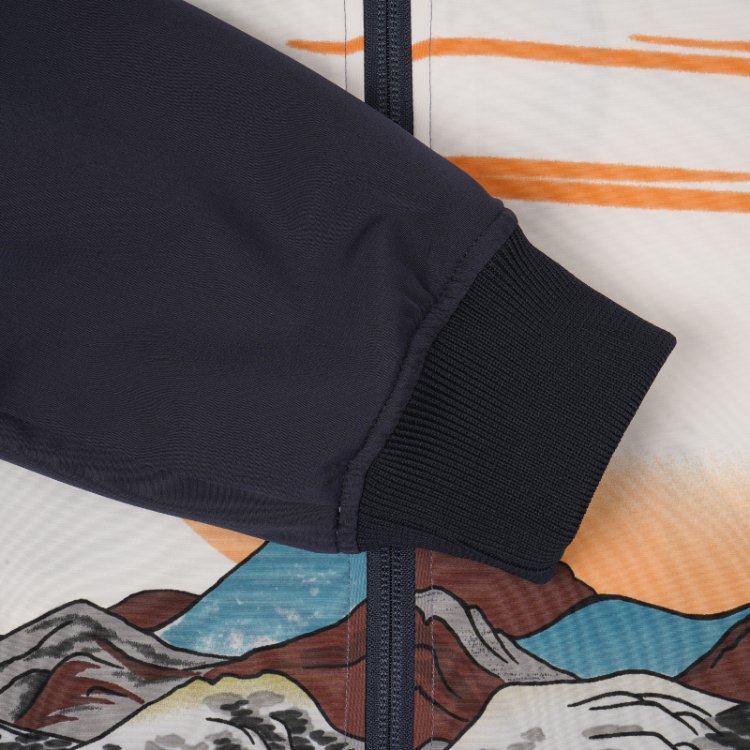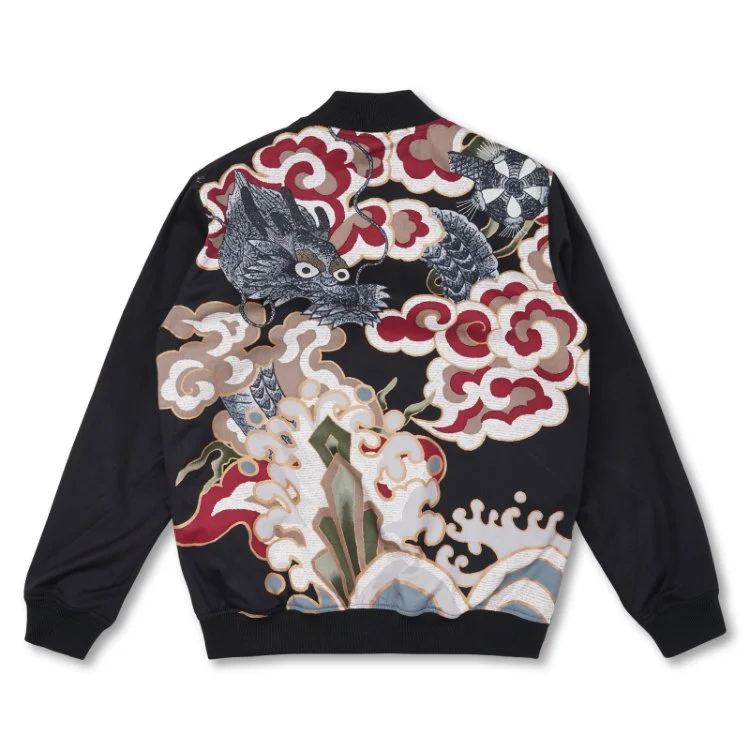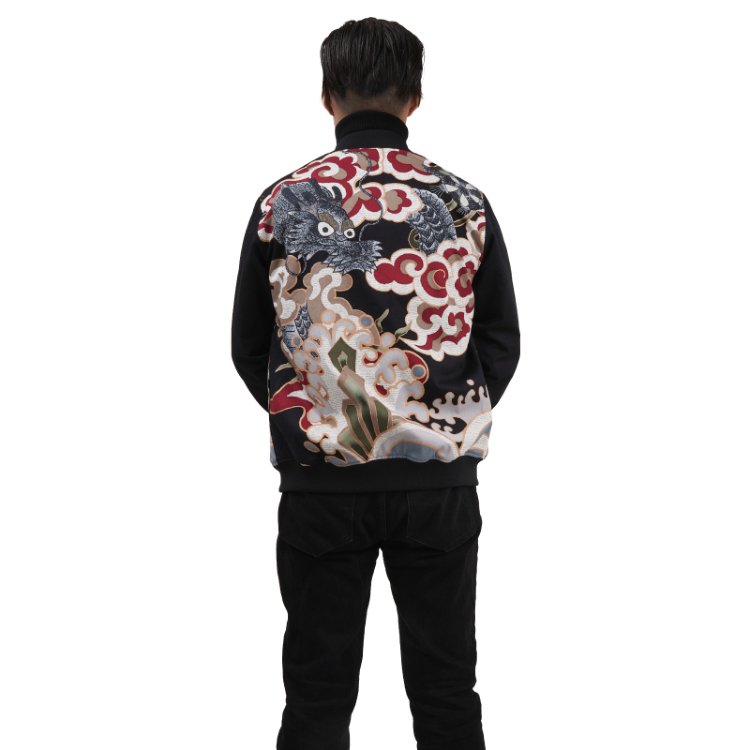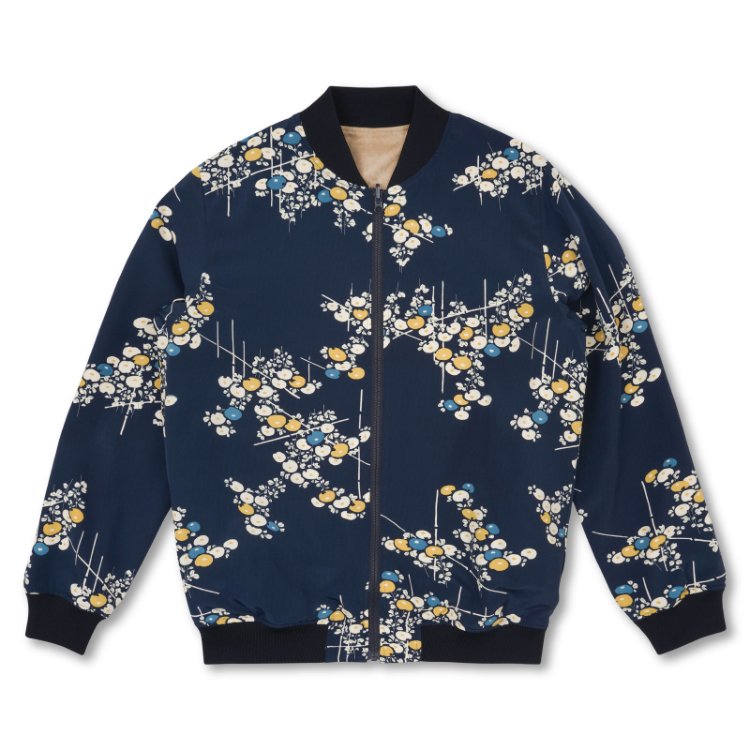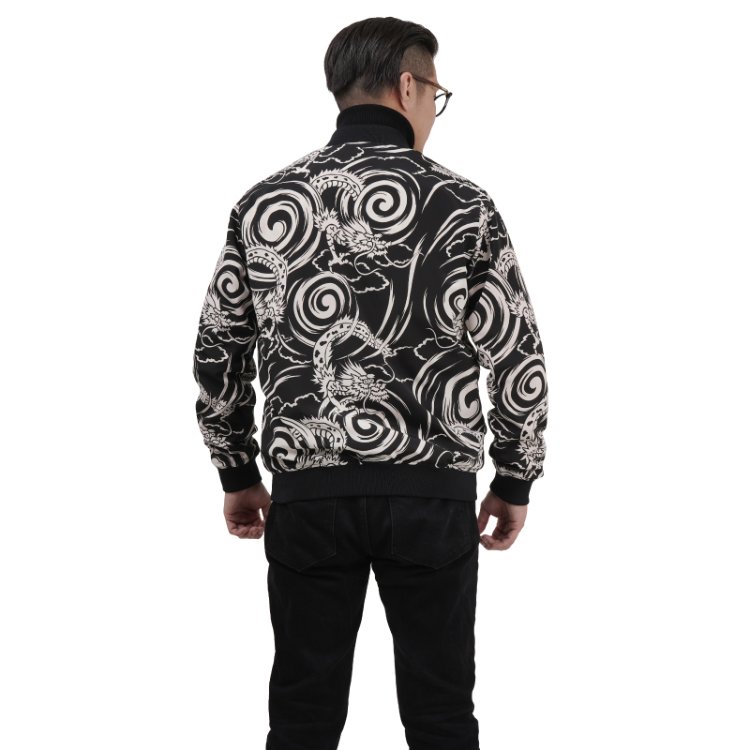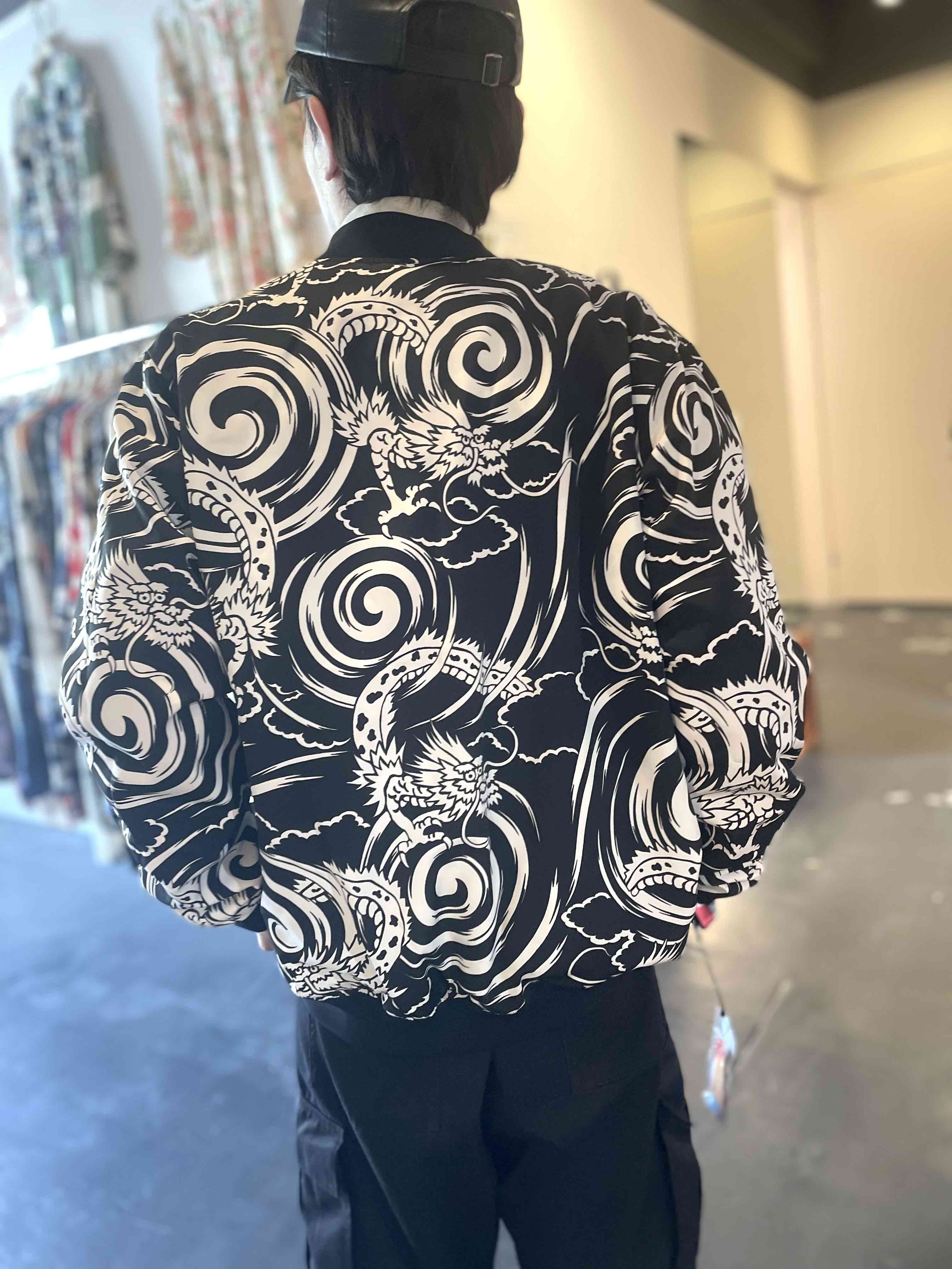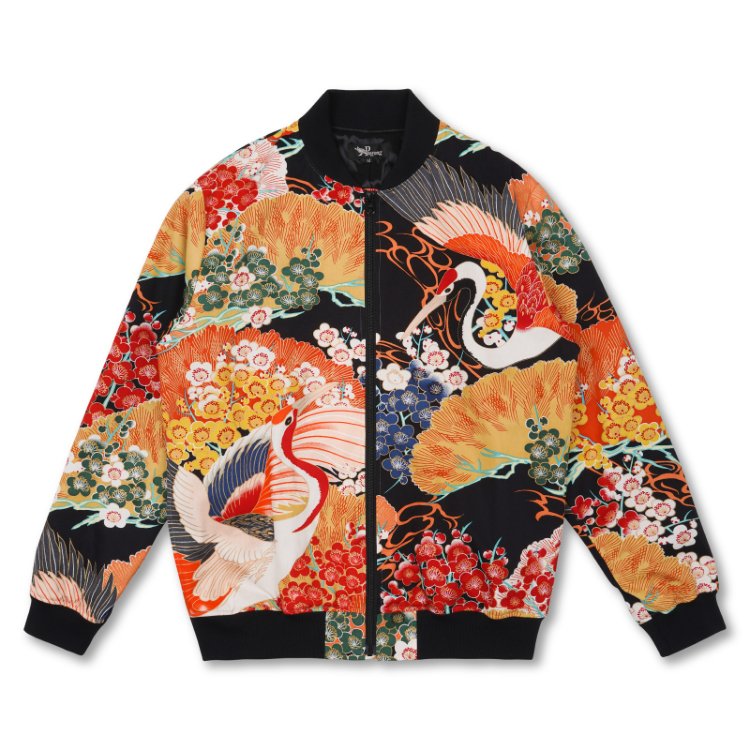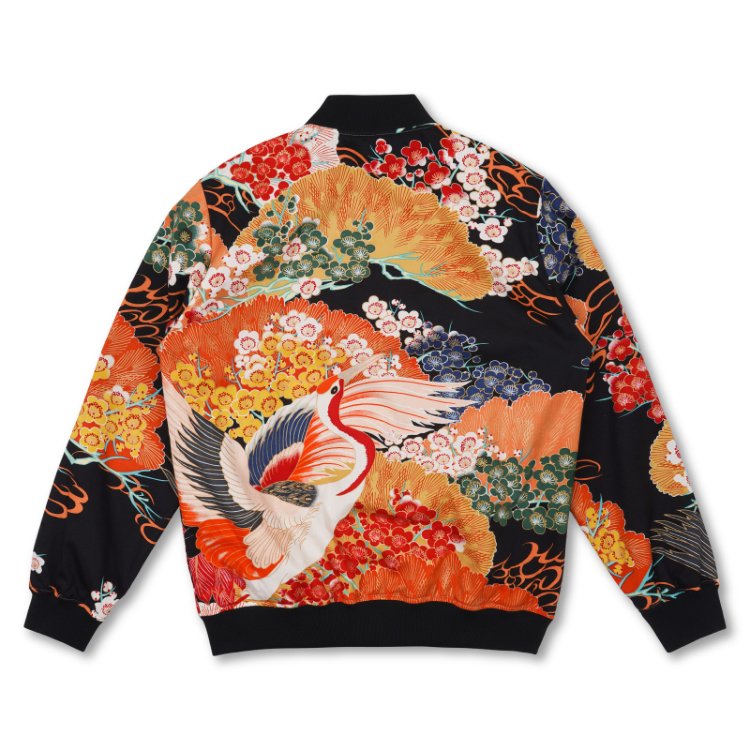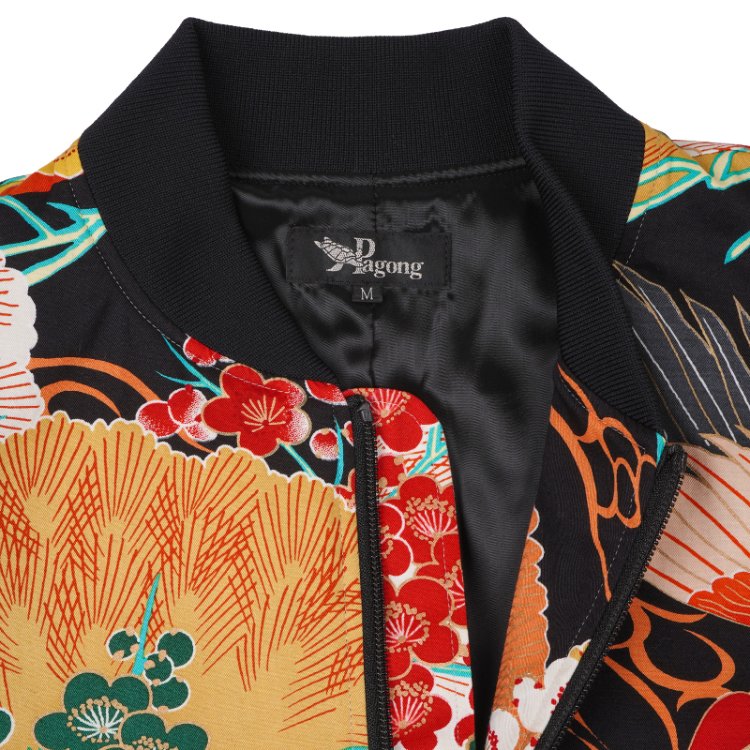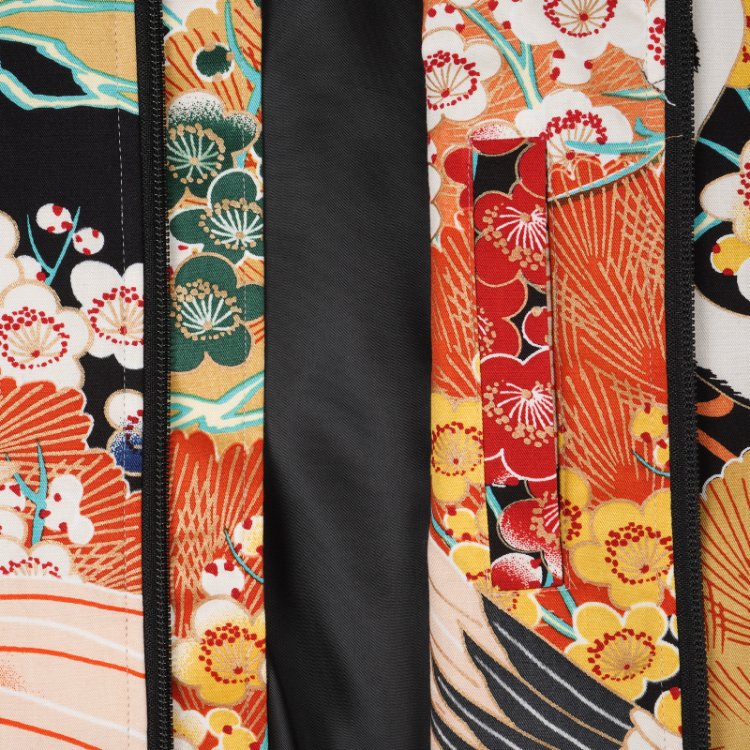HIROSHIGE'S "HAKONE" Silk Reversible Jacket Paris x Kyoto Collection
Reversible Jacket Care Instruction
-About-
Hiroshige Utagawa was born in 1797 in the Yaesu area in Edo (modern Tokyo). An invitation to join an official procession to Kyoto in 1832 gave Hiroshige the opportunity to travel along the Tōkaidō route that linked the two capitals. He sketched the scenery along the way, and when he returned to Edo he produced the masterpiece series “The Fifty-three Stations of the Tōkaidō”, which contains some of his best-known prints. This is print number 11, “Hakone”.
Some’ / Ori Project in Paris
To have been selected to take part in this exceptional Paris collaboration, has truly been an honor and privilege for us at Pagong Kyoto…
The “SOME’ and ORI” PROJECT was designed to bring together eight of the most established weaving and dyeing factories in the Kyoto area. “Some’ ” meaning “to dye”, and “Ori” meaning “to weave”, the artisan families which were selected, all had to be remaining faithful to their traditional origins, and united and driven by a common philosophy, that of preserving their heritage with the wish topromote, and share with the rest of the world.
The Somé & Ori project was sponsored by the Kyoto Prefectural Government.
Directed by Mineaki Saito
Art Directed by Chantal Granier
Designed by Mathilde Brégeon
・100% Silk
(Cuff Rib: 100% Polyester)
・Urban-style
・Dye technique-Kyo-Yuzen
・Reversible Design
・Dry-clean
Reversible Jacket Care Instruction
-About-
Hiroshige Utagawa was born in 1797 in the Yaesu area in Edo (modern Tokyo). An invitation to join an official procession to Kyoto in 1832 gave Hiroshige the opportunity to travel along the Tōkaidō route that linked the two capitals. He sketched the scenery along the way, and when he returned to Edo he produced the masterpiece series “The Fifty-three Stations of the Tōkaidō”, which contains some of his best-known prints. This is print number 11, “Hakone”.
Some’ / Ori Project in Paris
To have been selected to take part in this exceptional Paris collaboration, has truly been an honor and privilege for us at Pagong Kyoto…
The “SOME’ and ORI” PROJECT was designed to bring together eight of the most established weaving and dyeing factories in the Kyoto area. “Some’ ” meaning “to dye”, and “Ori” meaning “to weave”, the artisan families which were selected, all had to be remaining faithful to their traditional origins, and united and driven by a common philosophy, that of preserving their heritage with the wish topromote, and share with the rest of the world.
The Somé & Ori project was sponsored by the Kyoto Prefectural Government.
Directed by Mineaki Saito
Art Directed by Chantal Granier
Designed by Mathilde Brégeon
・100% Silk
(Cuff Rib: 100% Polyester)
・Urban-style
・Dye technique-Kyo-Yuzen
・Reversible Design
・Dry-clean
Reversible Jacket Care Instruction
-About-
Hiroshige Utagawa was born in 1797 in the Yaesu area in Edo (modern Tokyo). An invitation to join an official procession to Kyoto in 1832 gave Hiroshige the opportunity to travel along the Tōkaidō route that linked the two capitals. He sketched the scenery along the way, and when he returned to Edo he produced the masterpiece series “The Fifty-three Stations of the Tōkaidō”, which contains some of his best-known prints. This is print number 11, “Hakone”.
Some’ / Ori Project in Paris
To have been selected to take part in this exceptional Paris collaboration, has truly been an honor and privilege for us at Pagong Kyoto…
The “SOME’ and ORI” PROJECT was designed to bring together eight of the most established weaving and dyeing factories in the Kyoto area. “Some’ ” meaning “to dye”, and “Ori” meaning “to weave”, the artisan families which were selected, all had to be remaining faithful to their traditional origins, and united and driven by a common philosophy, that of preserving their heritage with the wish topromote, and share with the rest of the world.
The Somé & Ori project was sponsored by the Kyoto Prefectural Government.
Directed by Mineaki Saito
Art Directed by Chantal Granier
Designed by Mathilde Brégeon
・100% Silk
(Cuff Rib: 100% Polyester)
・Urban-style
・Dye technique-Kyo-Yuzen
・Reversible Design
・Dry-clean


















